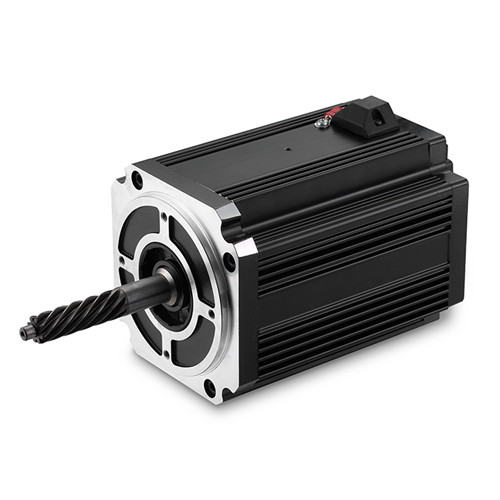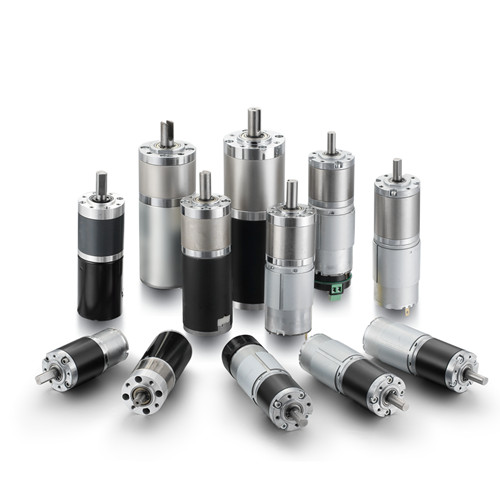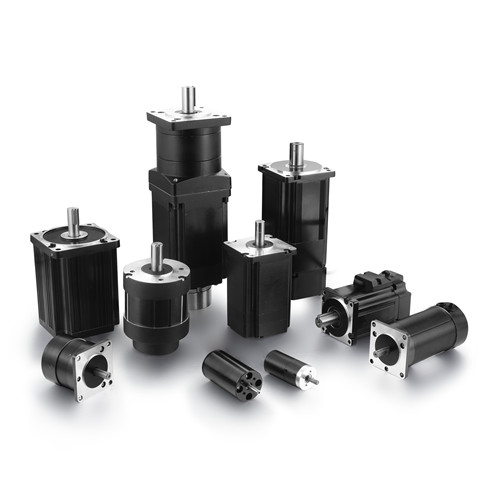Which motors are included in the robot?
Robots are mechanical devices equipped with software-based intelligence that can perform specific physical tasks. There are many kinds of robots and robotic applications. The robot is designed to suit its application, and its mechanical design, body, electronics and software are designed accordingly. Robotic vehicles or robotic cars are one of many types of robotic designs. Robotic cars are designed to move on flat surfaces, and they can perform certain tasks either remotely or autonomously. They are equipped with sensors, control circuits and actuators for operation.
The movement of the robot itself requires the use of motors. There are a variety of motors available for robotic applications. Each type of motor serves a different purpose. Motors aid in the movement of the robot and act as actuators in the mechanical design of the robot. Robotic applications may involve the following types of motion:
1) Vertical movement - usually by shoulder rotation to move part of the robot up and down
2) Radial movement - moving part of the robot in and out
3) Rotational movement - Rotation clockwise or counterclockwise around a vertical or horizontal axis or around a plane in a 3D frame
4) Pitching motion - up and down motion while rotating motion
5) Rolling motion - rotation of a part of the robot on a parallel axis relative to the rest of the robot's body
6) Yaw motion - right or left rotational motion of a part of the robot
7) Motion - the movement of the robot on a surface or medium
All these types of movements are achieved with the help of various motors or pumps assembled with the drive train and end effectors. In this tutorial, the use of motors to provide the main motion for the robot itself or its components will be discussed. This tutorial will examine different types of motors, their applications, motor selection, and robotic car design.
Motor type
There are many types of motors available in industry. For robotic applications, some type of motor is usually used. Motors commonly used in robotics applications can be divided into the following categories:
• AC motor
• Brushed DC motor
• Brushless DC motor
• Geared DC Motor
• servo motor
• Stepper motors
Today we will introduce three types of motors (AC motors, brushed DC motors, brushless DC motors)
AC motor:

AC motors are driven by AC current. They are typically used in heavy duty applications requiring high torque (high load or load capacity). That's why these motors are used in robotic assembly lines deployed in manufacturing cells. Mobile robots are usually powered by a DC power source (battery or series of batteries), which is why AC motors are rarely used for such robots.
Brushed DC Motor:

Brushed DC motors use brushes to conduct current between the power supply and the armature. There are several variants of brushed DC motors, but in robotics, permanent magnet DC motors are used. These motors are known for their high torque-to-inertia ratio. Brushed DC motors are capable of delivering three to four times more torque than their rated torque. A brushed DC motor consists of six different components: shaft, commutator, armature, stator, magnets, and brushes.
Brushed DC motors have two terminals. When voltage is applied to both terminals, proportional speed is output to the shaft of the brushed DC motor. A brushed DC motor consists of two parts: the stator including the housing, permanent magnets and brushes, and the rotor consisting of the output shaft, windings and commutator. Its stator remains stationary while the rotor rotates relative to the stator. The stator produces a stationary magnetic field around the rotor.
The rotor, also called the armature, consists of one or more windings. When these windings are energized, they generate a magnetic field. The poles of this rotor field are attracted by the opposite poles created by the stator, causing the rotor to rotate. As the motor turns, the windings are continuously energized in different sequences so that the poles produced by the rotor do not exceed those produced by the stator. This switching of the magnetic field in the rotor windings is called commutation.
Brushless DC Motor:

Brushless DC motors are similar in structure to brushed DC motors, but they are driven by a closed-loop controller and require an inverter or SMPS for power. These motors have permanent magnets that rotatably fix the armature. Compared to brushed DC motors, they have a closed-loop electronic controller in place of the commutator assembly. These motors are typically used in industrial robots that require precise control of motion and positioning. However, these motors are very expensive and involve complex structures and electronics.
To choose motors for the robot:
To choose the right motor, many different parameters must be considered, such as the load a particular motor can handle, the torque required to move the robot without overloading, the number of revolutions per minute the motor makes while under load, etc.
Since there are many types of motors, one should be selected based on the application. For example, to run a robotic arm, servos are often used. Wheeled robots are simple in design and use electric wheels to navigate the ground. Wheels are also easier to design and manufacture than tracks or outriggers. There are some drawbacks to using wheels, such as navigating obstacles or low friction areas that are not easy to use wheels.
The most commonly used motors in such robots are DC motors. DC motors provide high torque with high efficiency. By applying torque in response to a load, a DC motor can be characterized by a speed and torque curve. DC motors used in hobby robots are usually preferred with voltage ratings of 3, 6, 12 and 24 volts. If the voltage applied by the motor is lower than what is given in the datasheet, the torque will not be able to overcome the internal friction - mainly from the brushes. Also, if you apply a higher voltage to the motor than it supports, it can get hot and damaged.
If you are still worried about finding a motor, please contact the salesman of BG Motor, they will give you a very professional motor answer
 BACK
BACK

